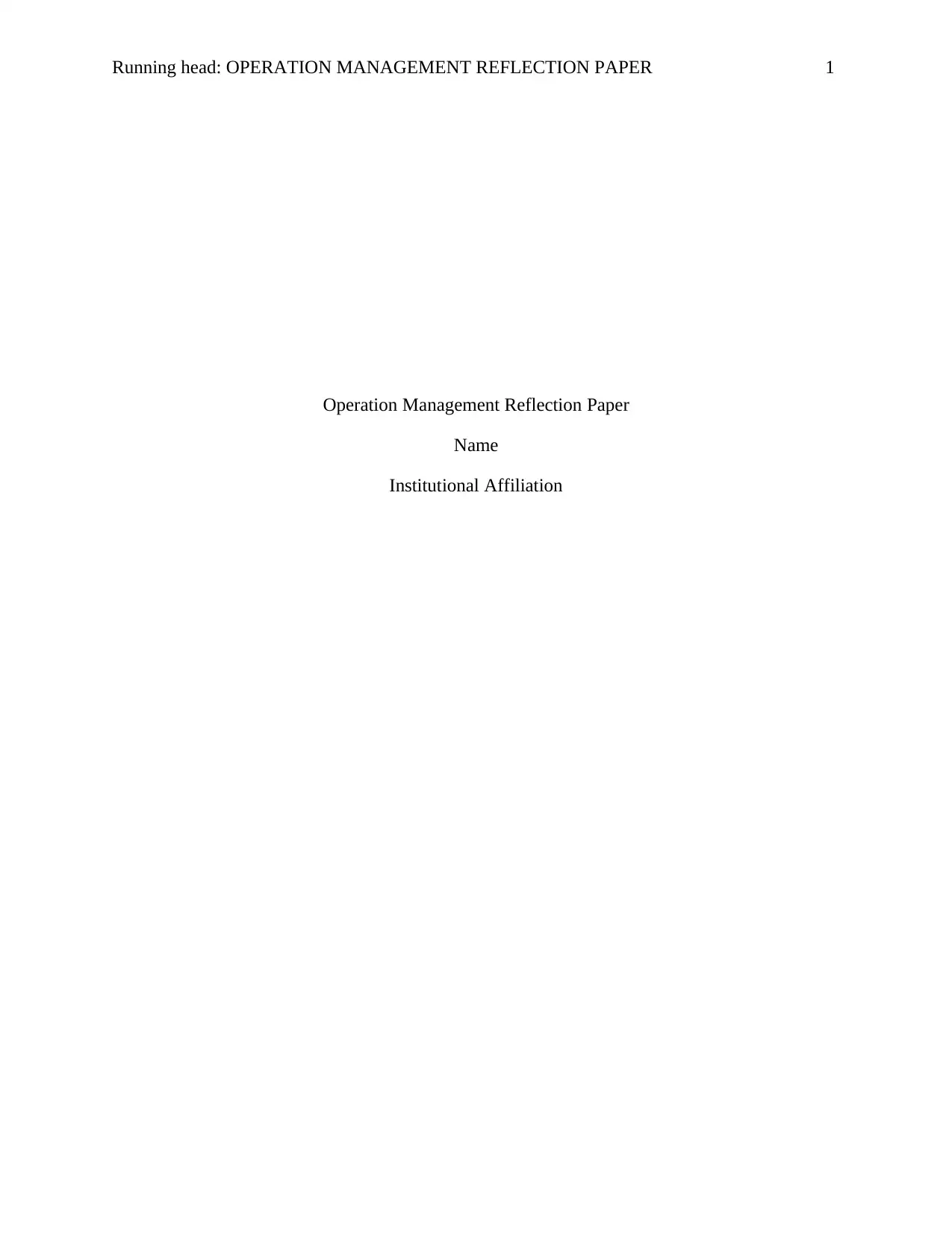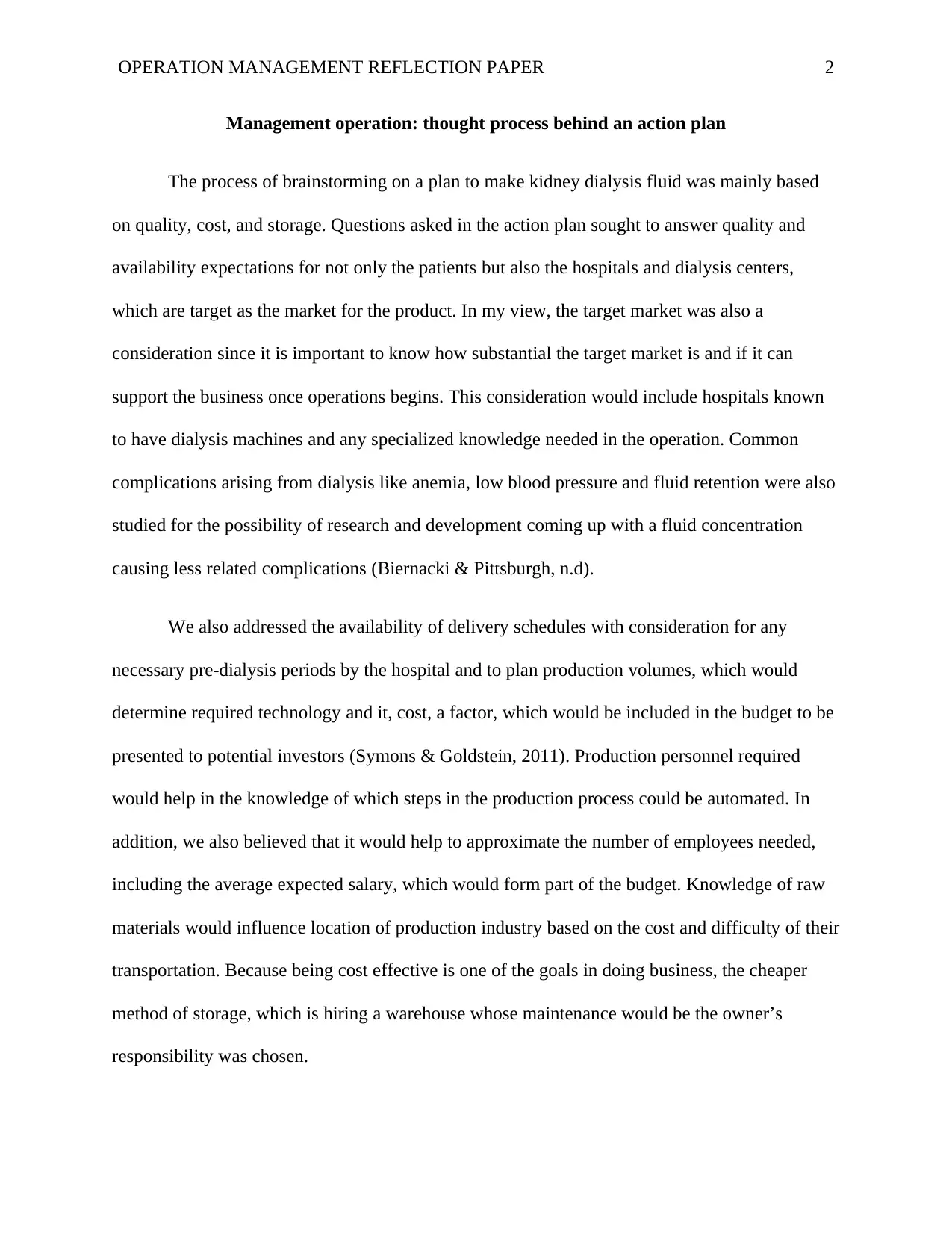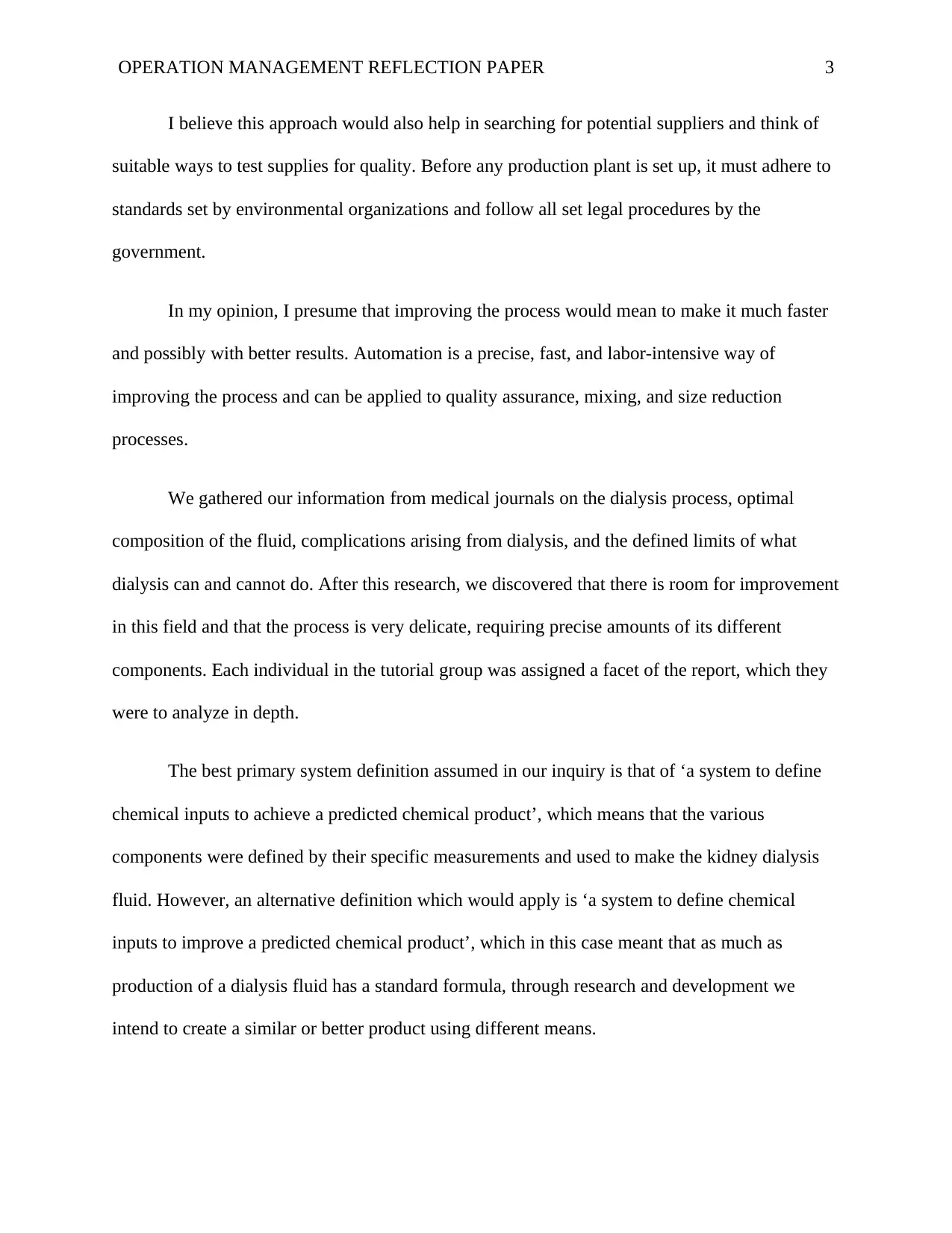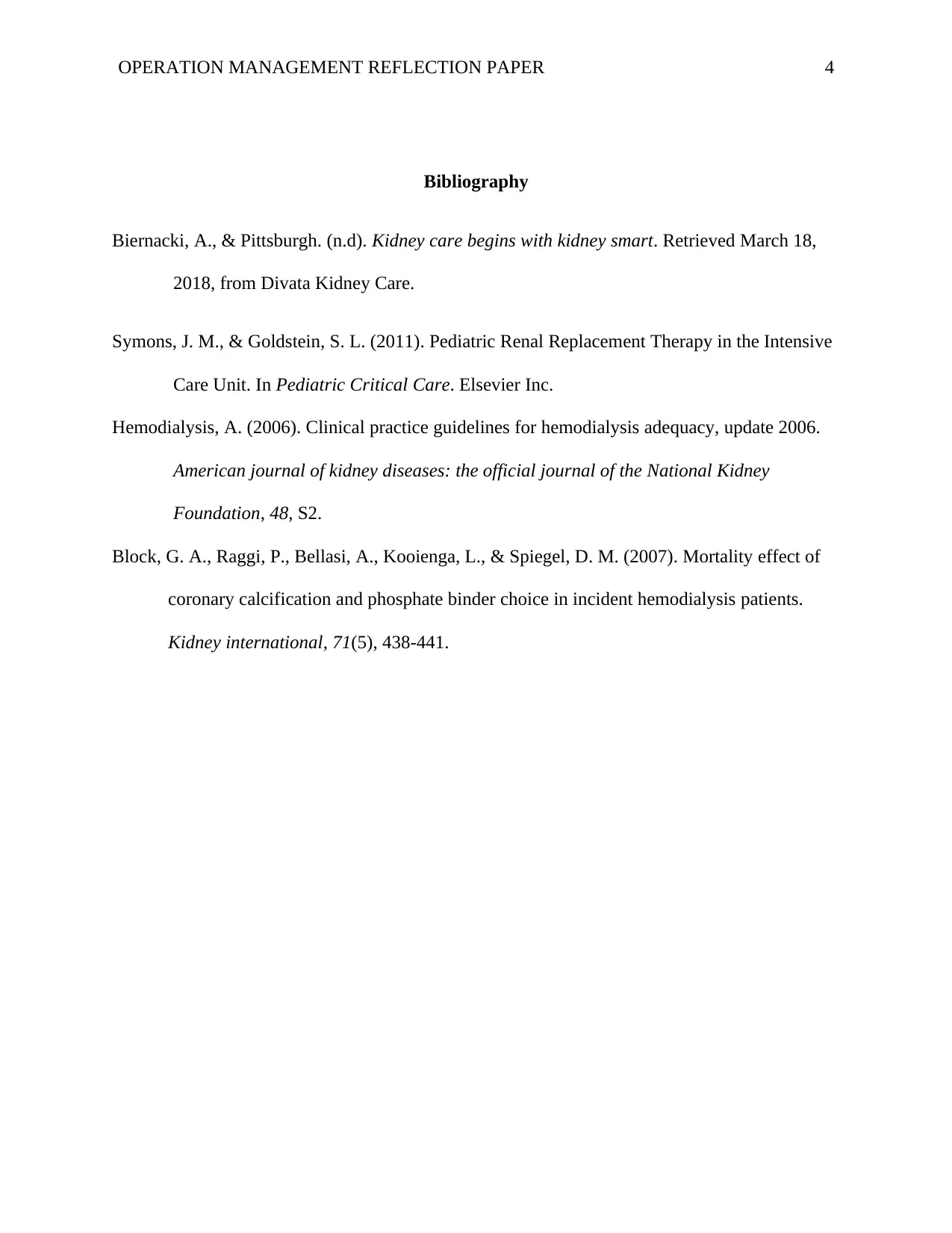Operation Management Reflection Paper: Production of Dialysis Fluid
VerifiedAdded on 2021/04/17
|4
|795
|39
Report
AI Summary
This reflection paper delves into the operation management principles applied to the production of kidney dialysis fluid. The report examines the thought process behind the action plan, emphasizing considerations of quality, cost, and storage. It explores the importance of understanding the target market, including hospitals and dialysis centers, and addresses potential complications associated with dialysis, such as anemia and fluid retention. The paper details the analysis of delivery schedules, production volumes, and the implications for technology, cost, and personnel requirements. It also considers the impact of raw materials on production location and storage methods. Furthermore, the reflection highlights the significance of adhering to environmental and legal standards. The process improvement focuses on automation for efficiency and precision in various stages. The research draws upon medical journals to inform the optimal composition of the fluid and addresses the delicate nature of the process, emphasizing the need for precise component measurements. The report concludes by defining the primary system as the definition of chemical inputs to achieve a predicted chemical product.
1 out of 4











![[object Object]](/_next/static/media/star-bottom.7253800d.svg)